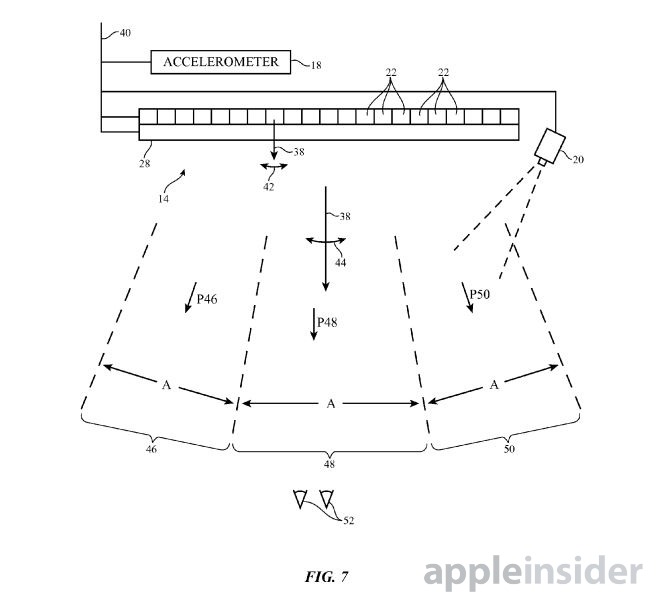An Apple patent application published early on Thursday could theoretically set the stage for iPhones and other devices with "autostereoscopic" displays, simulating 3D without the need for special glasses.
The patent, found by AppleInsider, describes a pixel array featuring a second array of subpixels and lens structures, the latter emitting light at a number of different angles. The key component though would be the "beam steerer," pointing the correct light at the viewer.
To judge where to aim the light, a device would use a camera and/or an accelerometer. That would suggest an emphasis on mobile devices, though Apple could conceivably try to implement the technology into MacBooks.
Glasses-free 3D has largely failed to take off in consumer electronics, so far. One attempt at the idea was Amazon's botched Fire Phone, which didn't offer a true stereoscopic effect but did employ a "dynamic perspective" sensor system. The most successful may be Nintendo's 3DS handheld.
The application was originally submitted in January 2015, and is credited to Jean-Jacques Drolet, a senior manager of Display Technologies at Apple.
 Roger Fingas
Roger Fingas








 Bon Adamson
Bon Adamson
 Marko Zivkovic
Marko Zivkovic
 Amber Neely
Amber Neely
 Malcolm Owen
Malcolm Owen


 Christine McKee
Christine McKee



-m.jpg)






31 Comments
What about using this technology to adjust for farsightedness or nearsightedness? With an app that you type in your left and right eye specs and the device would adjust.
"
Wasn't that just a parallax effect?
AppleInsider,
Please quit referring to patents as "Apple invention". They are NOT inventions. Patens are just patenting the idea. The way you title is strictly link bate. Companies like Apple patent every idea under the sun. That way, if they ever DO INVENT the thing, someone else can't claim they have the copyright, and vise-versa.
HTC EVO 2011